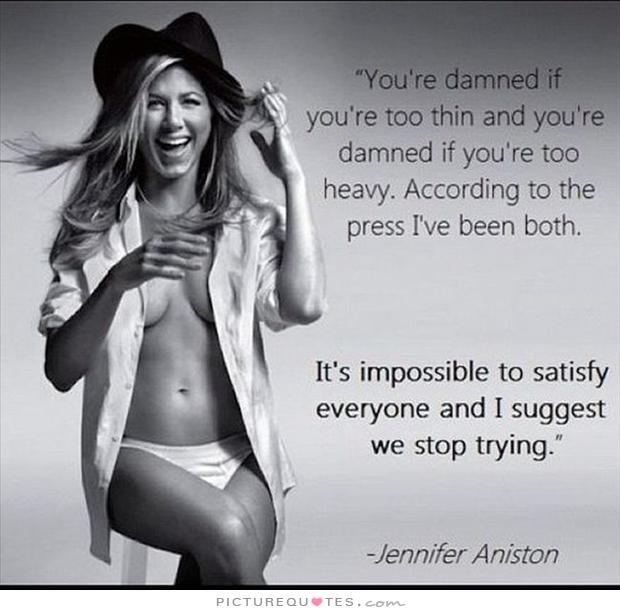I always remind myself how thankful I am that Instagram wasn’t yet created during my painfully awkward preteen years. I am thankful because I know it would’ve wreaked havoc on the thin, wavering tightrope that was my sense of identity and self-esteem. It would have toppled me.
Social media is plagued by “fitspiration”: images of trim and tight bodies. These images supposedly portray what every woman (and man) should look like. They suggest that what we should dream about, work for, and live for is achieving a hot, “insta-worthy” body. Fitness to the accounts posting these images seems to be heavily based on aesthetic, image-centered goals, rather than legitimate health-centered goals.

GIF courtesy of giphy.com
These accounts can be found on Instagram, Twitters, Facebook, blogs, and more. They all seem to perpetuate the message that once you look thin, fit and happy, you’ll be happy. They imply that socially accepted happiness should be only achieved by those under a size 6.
This is a dangerous and very narrow path to allow oneself to follow. At the end of it, there will be disappointments, frustrations and nagging, and negative feelings of self-worth that, when left unchecked, can easily consume you and reinforce destructive and detrimental “healthy” behaviors.

GIF courtesy of giphy.com
A recent study conducted by Georgia College & State University examined the relationship between one’s consumption of “fitspiration” and one’s respective eating and exercise habits. Data was selected from a little over 250 participants who completed questionnaires containing items spanning their health, self-image and social media practices.
Not surprisingly, but still socially disappointing, researchers found a significant link between young people’s consumption of “fitspiration” and their respective engagement in anorexic or bulimic-related behaviors, such as binging and purging. They also acknowledged their use of exercise “in order to feel good about themselves.”
While these results are not a causal link, and only correlational in practice, it still brings to mind questions regarding the morality of “fitspiration” accounts. What influence do we really want to perpetuate onto today’s youth: one that is seemingly proud of only one body type, or one that is rightfully loving and encouraging of bodies of all shapes and sizes?

Photo courtesy of Picturequotes.com


